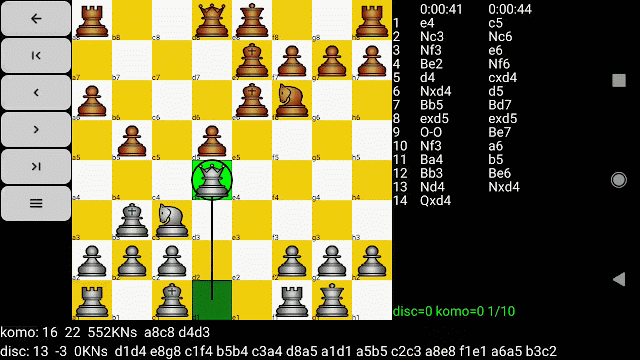Reversi for Android: Full Game Navigation

It has been a while since I added major features to Reversi for Android , but I recently added something I had been planning for a long time: a notation window and full game navigation, similar to Chess for Android. The result is shown below. No more artificial restrictions on the undo, one can simply go back and forth in the full game, and try different strategies to learn from one's mistakes! An interesting factoid is that Reversi uses a slightly different board orientation for the algebraic notation: the a1 square is in the upper left corner with the h8 square in the bottom right corner. This goes a bit against my chess intuition, but obviously I had to follow the Reversi convention.








